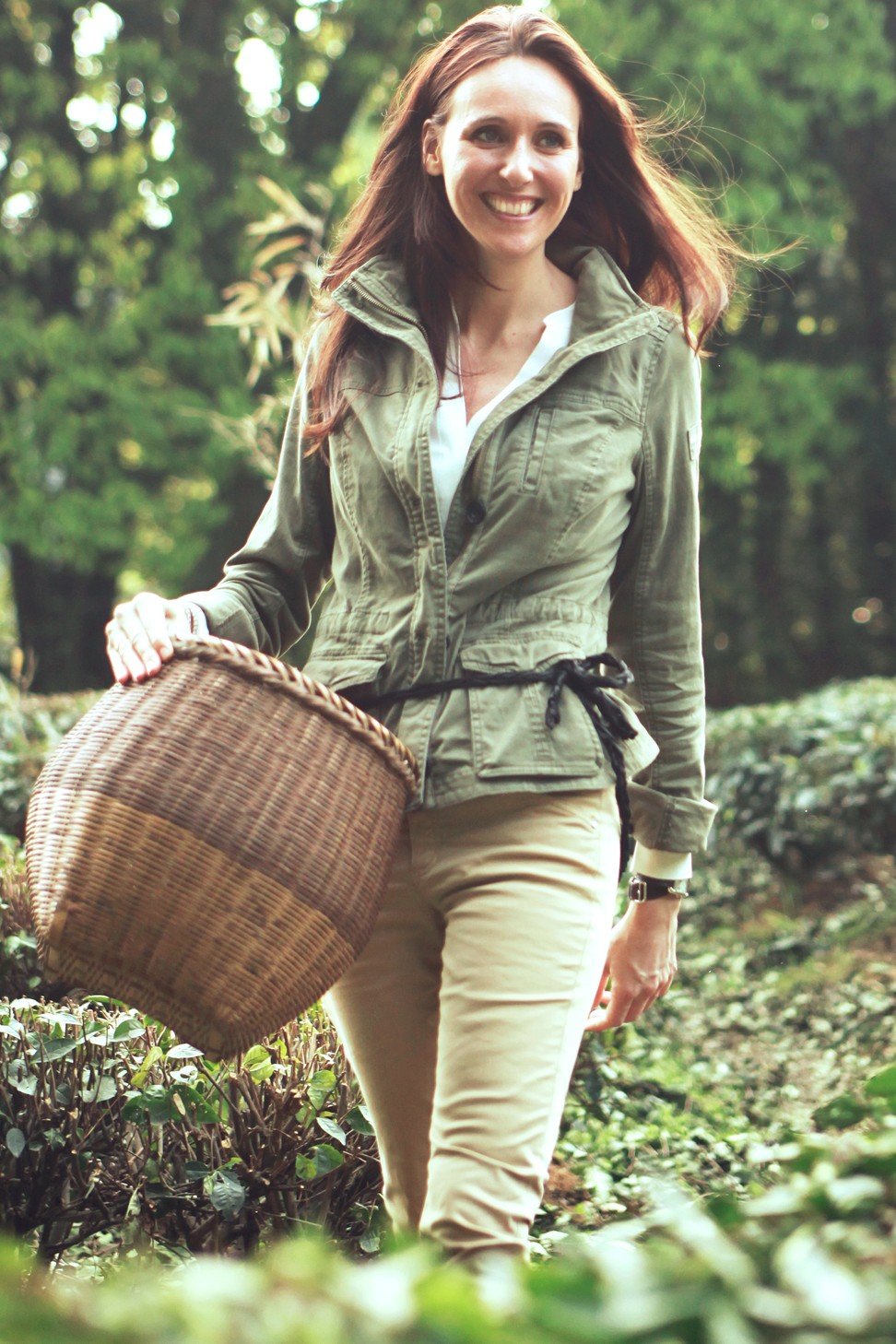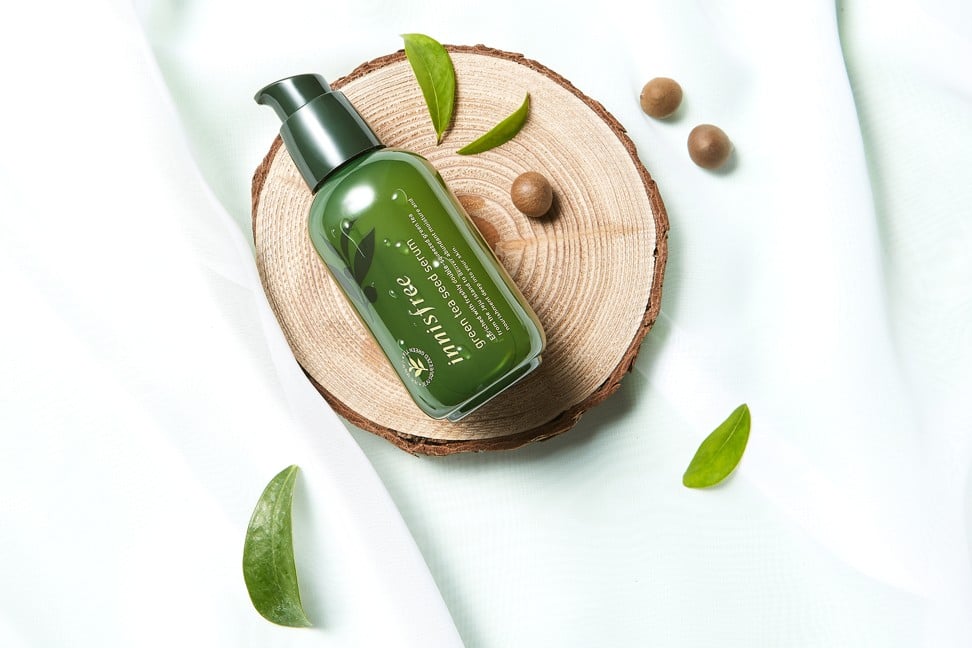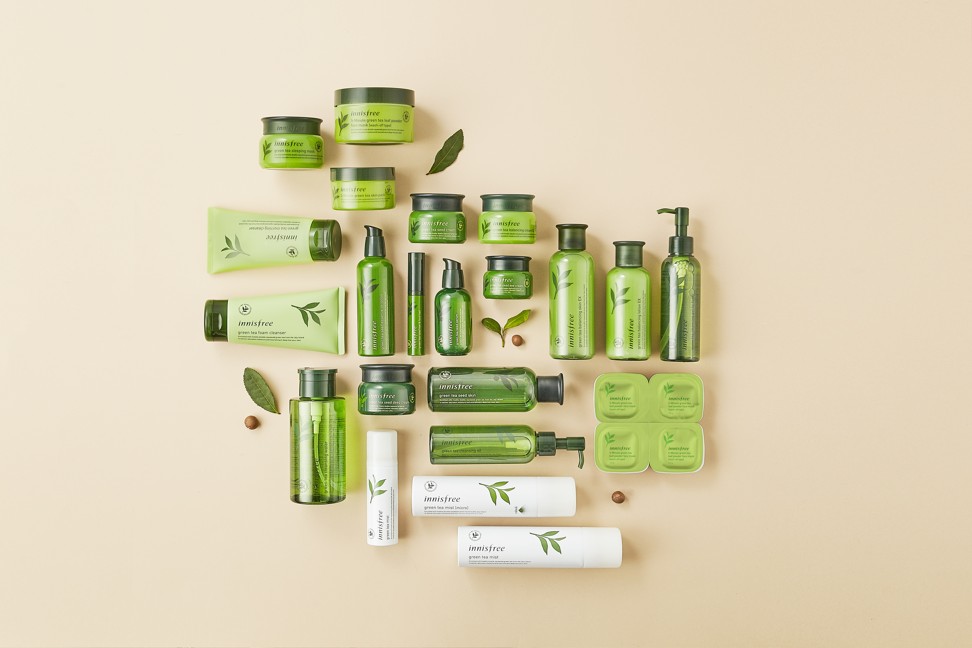
How a Frenchwoman discovered fine Chinese tea’s healing powers and put it into a skincare line
China has been slow to harness the healing qualities of its finest teas for skincare products, unlike Japan and South Korea. Chinese-French brand Lu Ming Tang puts that right

When Shanghai-based French expat Marie Amiand began to experience mysterious health symptoms that included fatigue, dull skin and loss of hair in 2012, she was offered some interesting advice.
Her doctor suggested that she start drinking green tea after she was diagnosed as suffering from heavy-metal poisoning.
“I was told to drink five cups of Longjing green tea daily. It is one of the most precious teas in China and contains one of the most powerful antioxidants to accelerate cellular regeneration,” says Amiand. “I regained my health and my complexion improved.”
Her bout of ill health and the positive effects of tea drinking – which she did in conjunction with other treatments the doctor prescribed – inspired Amiand, a self-described former coffee drinker, to travel to the tea region of Longjing, where she learned about its beauty benefits.

The former cosmetics consultant then decided to use her experience with the beauty industry to create a tea-based skincare brand. It took four years of research with a Japanese cosmetics laboratory and the National Tea Research Centre in China before she finally launched skincare brand Lu Ming Tang in 2016, featuring extracts of some of China’s finest teas as key active ingredients.
It is only in recent years that Chinese entrepreneurs have begun using tea in commercial beauty products.
While there are many beauty brands, most notably from South Korean and Japan, that incorporate tea extracts, Lu Ming Tang is believed to be one of the first tea-focused beauty brands from China. (There is at least one other Chinese beauty brand called Cha Ling, which features pu’er tea as a core ingredient, and is owned by LVMH).

Lu Ming Tang ups the ante by focusing on four different “imperial grade” Chinese teas: Longjing green tea from Hangzhou, Tieguanyin Wulong tea from Fujian, Baihao Yinzhen white tea from Fujian and Pu’er black tea from Yunnan.
With modern packaging, use of premium Chinese ingredients combined with French biotechnology and Japanese manufacturing, Lu Ming Tang has a contemporary appeal that may see it carve out a niche in the competitive beauty industry.
Its range of products include creams, lotions, spritzes and facial masks. The brand currently has two stand-alone stores, in Shanghai and Hangzhou, and is stocked in about 240 Sephora outlets in China. It recently launched in Singapore and has plans to expand to other countries.

The benefits of drinking tea are manifold. Dr Melvin Tan, medical director and founder of Epion Clinic in Singapore, says the antioxidant effect of tea is likely to help slow down wrinkle formation, pigmentation and skin sagging.
“Several animal and human studies have found that green tea also exerts protection from sun damage,” he says.
The benefits of tea are also evident in skincare products, which are applied topically. Aesthetics doctor Georgia Lee, who is also the founder of skincare brand Dr GL, explains that the aminophylline component of tea helps to relax blood vessels and increase circulation, while its diuretic effect has been used in eye products to reduce dark eye circle and puffiness.

“The anti-inflammatory and antioxidant components of tea have been placed in skincare targeting sensitive, anti-ageing, acne prone skin,” she says.
“Tea is also used in massage products to help reduce the appearance of cellulite by increasing blood circulation and reducing water retention.”
Some brands go to great lengths to harness the power of tea – and are richly rewarded for it. South Korean beauty brand Innisfree was an early adopter of tea-based skincare with its bestselling Green Tea range, which launched in 2008. As of February 2017, it had sold over 100 million bottles of its star product Green Tea Seed Serum.

The brand’s source of green tea is Jeju, an island off the south coast of the Korean peninsula, where its scientists studied 2,400 types of tea and bred 238 species to develop the brand’s proprietary “Beauty Green Tea”.
“This is a specialised ingredient for the skin that is excellent in delivering hydration and retaining moisture, which is different from the green tea we consume,” says Lee Hyun-joo, brand manager for Innisfree’s green tea line.
This tea also contains a high amount of amino acids, which are extracted from the tea leaf’s thick shell and wax epidermis through a special method to ensure maximum efficiency. Lee says: “Amino acids can help to improve all skin concerns stemming from the lack of moisture, including rough skin texture, dryness and fine lines, and skin’s firmness.”

Beauty brands beyond Asia are picking up on this trend. American beauty brand Fresh has a Black Tea collection that comprises creams, essences and masks that its founders Lev Glazman and Alina Roytberg created after discovering kombucha, a fermented drink made with black tea.
“After researching the effects of black tea on skin, we were astonished to find just how beneficial it was. Highly rich in antioxidants, it works to re-energise skin cells and reinforce their structure,” Glazman says.
There is also no denying the experiential element of marketing tea-based beauty products, since the tea culture is strongly associated with relaxation and calmness, which is a key element of skincare and self care.
Lu Ming Tang’s flagship in Hangzhou is a tea house that was once the Qianlong Imperial Library. At this beautifully preserved building nestled in the Unesco-listed Longjing tea mountains, customers may sip on a cup or two of tea as they browse the range of beauty products.
Amiand says: “The maison epitomises our respect for the Chinese tea culture and we hope to ignite people’s curiosity when they visit.”